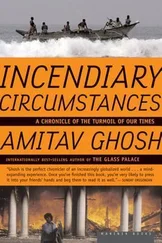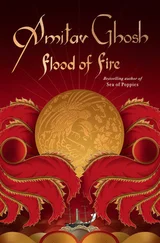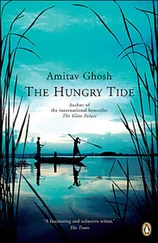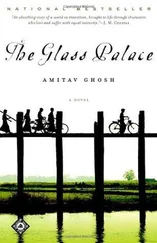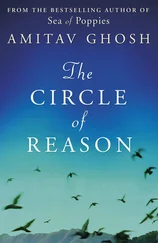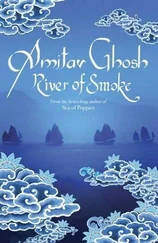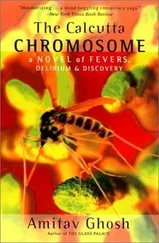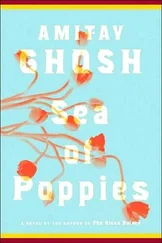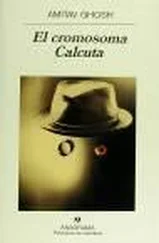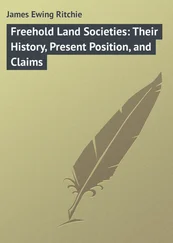It is somewhere in those dark and shaded regions that the pedigree of the name Bomma takes a sudden and unexpected turn and leads away from the Brahma of classical Hindu mythology towards a deity of an altogether different character.
And, by an extraordinary coincidence, said Professor Rai, I could, if I wanted, have a glimpse of that deity, a darshan, that very night.
‘How?’ I asked, imagining a night-time vigil at a lonely shrine in a deserted and wind-tossed palm-grove. ‘Is there going to be a secret exorcism?’
Professor Rai cast me a quizzical glance. ‘On television,’ came the laconic answer. ‘In a film that’s going to be broadcast this evening.’
The film was in black and white; it had been made some ten or fifteen years earlier by some friends of Professor Rai’s, and besides serving as an advisor for it, he had also written some of the songs. It was one of a small number of films made in the Tulu language, and it was based upon the most celebrated folk-epic of Tulunad, a legend that recounted the deeds of two heroic brothers, Koti and Chennaya.
When the heroes appeared on the screen, I noticed they were carrying small sickles around their waists. The sickles were symbols of their caste, Professor Rai explained, for the brothers were Billavas, whose traditional occupation was that of brewing and extracting palm-wine or toddy.
Through no fault of their own, Koti and Chennaya eventually ran afoul of the ruler of their area — a man of the Bant caste, which was traditionally the landowning community of Tulunad. Soon their enmity became very bitter, and the brothers were sentenced to exile and sent away from their native region. Before setting out on their travels, however, they managed to go to the shrine of their personal deity to seek his succour and protection.
‘Now watch this scene,’ said Professor Viveka Rai with a smile, as the two heroes went up to the shrine and began to sing a devotional song, their hands joined in prayer.
Listening carefully, I soon recognized a name that was repeated over and over again; it was the only word I could understand, for the song was, of course, in Tulu. This particular word, however, was instantly familiar: it was none other than ‘Brahma’.
Having recognized the name of the deity, I thought I knew exactly what I would see when the camera turned towards the shrine’s interior: a four-headed, four-armed image, accompanied by a goose — the traditional representation of the god Brahma according to the rules of classical iconography. But instead, to my great surprise, the camera revealed an elongated wooden figure, with curling moustaches, holding a sword in one hand. It was an image of a warrior-deity, wholly unrelated to the Brahma of the Sanskritic pantheon.
I knew now why Professor Rai had smiled so enigmatically: the deity of the Tulu myth was evidently not the same as the Brahma of classical Sanskritic mythology.
Later, he explained that the god depicted in the film had originally had a wholly different name: he was Berme or Bermeru, the principal figure in the pantheon of Tuluva Bhutadeities. Over time, with the growth of Brahminical influence, the Tulu deity Berme had slowly become assimilated to the Sanskritic deity ‘Brahma’.
So the pedigree of the name Bomma in the Tulu language probably stretched back to a time before the deities of Tulunad had begun to assume Sanskritic incarnations: in all likelihood it was a diminutive of ‘Berme’, the figure who stood at the pinnacle of the Tuluva pantheon of Bhuta-spirits.
It took me a long time afterwards to check the steps in the argument and to work out the consequences that this derivation would have for the history of the Slave. Speculative though it was, the argument seemed to lead to the conclusion that the Slave of MS H.6 had been born into one of the several matrilineal communities which played a part in the Bhuta-cult of Tulunad.
It was thus that Bomma finally came of age and was ready at last to become a protagonist in his own story.
4
THERE IS ONLY one incident in Bomma’s life of which we have direct knowledge. By yet another odd coincidence this story also happens to be the one with which Bomma entered the annals of the Geniza: the letter which recounts it is the earliest known document in which his name is mentioned.
The principal reason why the story has been preserved is that it was set in Aden, and thus earned a mention in a letter written by Madmun. The letter in question is one of the most important that Madmun ever wrote, for he included in it a description of an unusual and dramatic event: a piratical raid on Aden by the ruler of a small kingdom in the Persian Gulf. Yet in the letter, Bomma’s doings actually took precedence over the raid and from the pattern of Madmun’s narrative it seems possible that Bomma was actually present, on his very first appearance in the Geniza, at the enactment of a full-blooded historical event, more than a thousand miles from his home in Mangalore.
The events which Madmun described in his letter are known to have occurred in 1135, so the letter must have been written soon afterwards. Bomma happened to be in Aden at the time because Ben Yiju had sent him there on an expedition that appears to have been partly a business trip and partly a shopping jaunt. When he returned to Mangalore, he brought back a large consignment of goods, including a whole array of clothes, household utensils and presents for Ben Yiju and his family. Altogether, the purchases that Bomma made in Aden added up to about ninety-three dinars. It is worth adding — since it is only human to be curious about other people’s shopping expenses — that this sum of money could have paid the wages of a mason or builder for more than two and a half years, or it could have bought somewhere in the region of 2,000 kilograms of meat or 3,000 kilograms of olive oil. Alternatively, with the addition of a mere seven dinars it would even have served to ransom the lives of three adult Spaniards at the going rates.
Ben Yiju gave Bomma a fairly generous monthly allowance while he was in Aden — two dinars a month, or about the wage of any artisan — but the figure was a paltry one compared to the sums of money that Bomma was handling in Aden. Madmun’s accounts show that the consignment of goods that Bomma took with him to Aden fetched about 685 dinars on the market: a sum that would have been large enough to buy Ben Yiju a splendid mansion in Fustat. But of course, Bomma for his part must have been accustomed to dealing with sums of that kind, for it is worth remembering that this small fortune represents the value of just a single consignment of goods sent from Mangalore to Aden — probably no more than a seasons earnings, and that, too, for a newly established merchant with a business of relatively modest size.
The volume of goods and money that flowed through Aden was evidently huge and it was the prospect of those rich pickings that made the city the object of a raid in the year of Bomma’s visit.
The expedition was not perhaps an event that properly deserves to be called ‘historic’, yet it did make a deep enough impression to earn a mention in a chronicle written by the historian Ibn Mujawwir a century and a half later. As for Ben Yiju’s friends in Aden, at least two of them were moved to describe it at length in their correspondence: Madmun, when he wrote to Ben Yiju, and Khalaf ibn Ishaq, in a letter to their common friend, the traveller Abu Sa‘id Halfon.
The villains of the piece, by common agreement, were the rulers of Kish (or, properly speaking, Qai  ), an island at the mouth of the Straits of Hormuz, which by virtue of its location commanded the sea routes to the Persian Gulf. The Amirs of that tiny kingdom were amongst the most ambitious representatives of a breed that proliferated in the Indian Ocean: pirates, who made their living by preying on the rich merchant vessels that plied the trade-routes.
), an island at the mouth of the Straits of Hormuz, which by virtue of its location commanded the sea routes to the Persian Gulf. The Amirs of that tiny kingdom were amongst the most ambitious representatives of a breed that proliferated in the Indian Ocean: pirates, who made their living by preying on the rich merchant vessels that plied the trade-routes.
Читать дальше
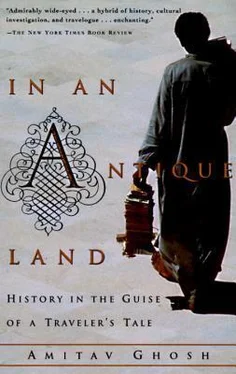
 ), an island at the mouth of the Straits of Hormuz, which by virtue of its location commanded the sea routes to the Persian Gulf. The Amirs of that tiny kingdom were amongst the most ambitious representatives of a breed that proliferated in the Indian Ocean: pirates, who made their living by preying on the rich merchant vessels that plied the trade-routes.
), an island at the mouth of the Straits of Hormuz, which by virtue of its location commanded the sea routes to the Persian Gulf. The Amirs of that tiny kingdom were amongst the most ambitious representatives of a breed that proliferated in the Indian Ocean: pirates, who made their living by preying on the rich merchant vessels that plied the trade-routes.